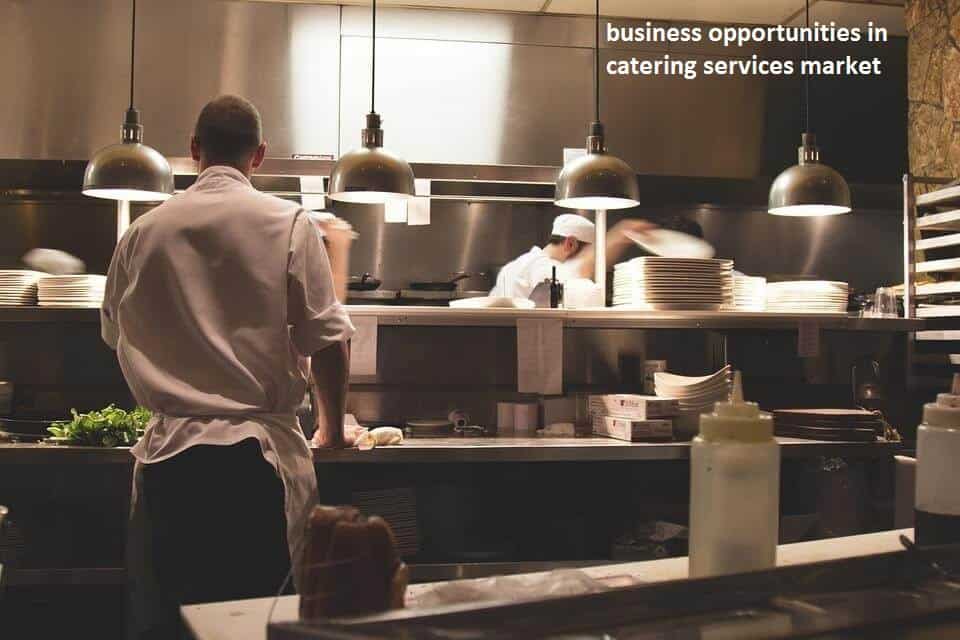Technology is making it easier for caterers to deliver their products to the customers in an efficient manner. They are taking help of mobile apps and live tracking features to make sure that the products reach the customers on time and in perfect condition. This added convenience in providing food is helping the catering service market to grow at a fast rate. As per recent catering industry trends, the global market is expected to grow at a CAGR of 4.4 percent and is expected to reach the total value of $614.47 billion by 2023. Western European countries such as UK, France, Singapore, Italy, the U.S, Hong Kong, and UAE are high maturity regions and will witness steady growth. The market for catering services in Middle Eastern regions, China, India, Japan, Canada, Australia, and Mexico is anticipated to grow exponentially over the next few years.

Table of Contents
What is a catering service?
Catering service is a business providing food service to any event or location. The services are generally sold on a per person basis. The various proposals included in catering service include arrival time of rental and staff, closing and opening time of bar, meal time and rental pick-up time. The price of catering service is generally affected by factors such as choices in the menu, rental supplies, labor and service charges. Most popular types of catering services include mobile catering, airline catering, and event catering.
The food is served from a truck, cart or any other vehicle in mobile catering service. Airline catering is meals and snacks served to passengers on a plane. Boxed lunch services are lunches prepared in individual containers and is often served to businesses during working hours. Event catering is used for large events and functions. Food in this service is served with waiting for staff. A full catering service not just provides food but also room decoration, lighting and table settings.
The growing adoption of technology is a driving force for the growth of the catering service market. The technology is helpful in providing effective customer service to consumers along with a reduction in the time spent waiting for food.
Catering Industry Trends
Large spending in corporate events is the main driver for the growth of the food service industry. Performance-based metrics are used by caterers for evaluation and monitoring of performance as that helps improve their product offering.
Multinational corporations in the Asia Pacific region and some parts of the Middle East are seeking catering services on a regular basis, which has further triggered the growth of the industry. There are increased instances of mergers, acquisitions, and partnerships between top global suppliers. It is helping the industry become more organized. Compass Group, Sodexo, ISS, and Aramark are aggressively trying to establish their stronghold in the catering service market.
Online catering service is the most recent and widespread trend in the catering industry. This increases convenience in the process of ordering food for a large group of people having various preferences. These websites have options of selecting the food type, quantity and even give instructions to the caterer for special preferences.
Catering Service Market Growth Analysis
In 2016, the global catering market value was $454.3 billion. The market is predicted to reach a total value of $614.46 billion by the year 2023. There is expected to be excellent growth in countries like Saudi Arabia, Canada, Turkey, Australia, and Japan by the year 2020. Whereas in Western European countries such as France, Italy, UK and also countries like the U.S, UAE, Singapore and Hong Kong, the market is highly mature, and the growth rate is going to be slower.
Catering service market as a standalone is still underdeveloped except in Western Europe, the U.S., and a few other countries. IFM (Integrated Facilities Management) contracts account for 70 percent of the total outsourcing contracts in the developed market. The suppliers are now focusing on upcoming markets such as healthcare institutions and educational institutions as they offer high growth potential.
The Asia Pacific region is emerging as the biggest consumer for global catering services. With the rapid growth in the economy and the strong start-up culture, the demand for catering services is going to be strong in this region for many more years to come.
Various constraints and drivers in the growth of catering service
The main reasons for the growth of catering service include:
- Increased use of mobile technology has improved the growth of catering service which increases convenience for consumers and has also reduced food delivery time.
- The demand for fresh and healthy food has led food service operators to focus on healthier meals preparation. Fresh ingredients are used in place of frozen pre-prepared foods.
While the constraints facing the market include:
- There is a low level of awareness about various trends in the catering services among buyers which has resulted in constraints in the growth of catering services.
- Subcontracting and variation in services offered by various catering service providers is also a constraint for the growth of the market.
While the challenges facing the catering services market are significant but the growth prospects still look very promising and are expected to drive the growth of the market in the coming years.


